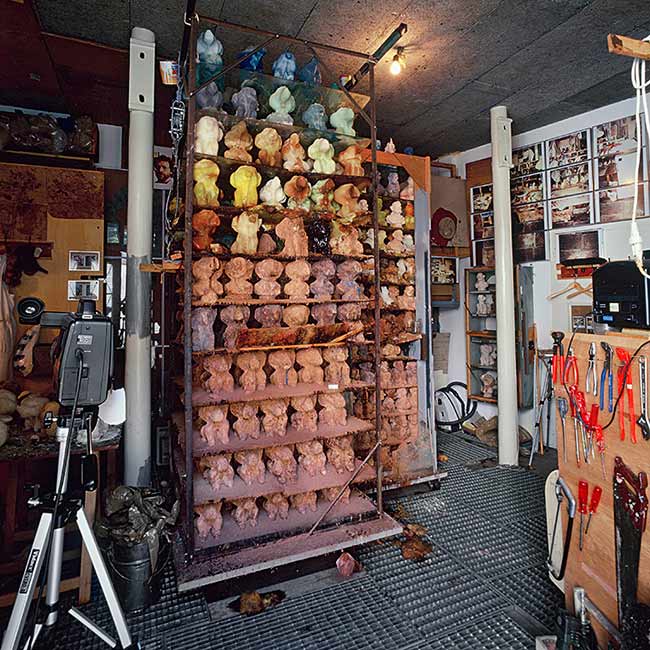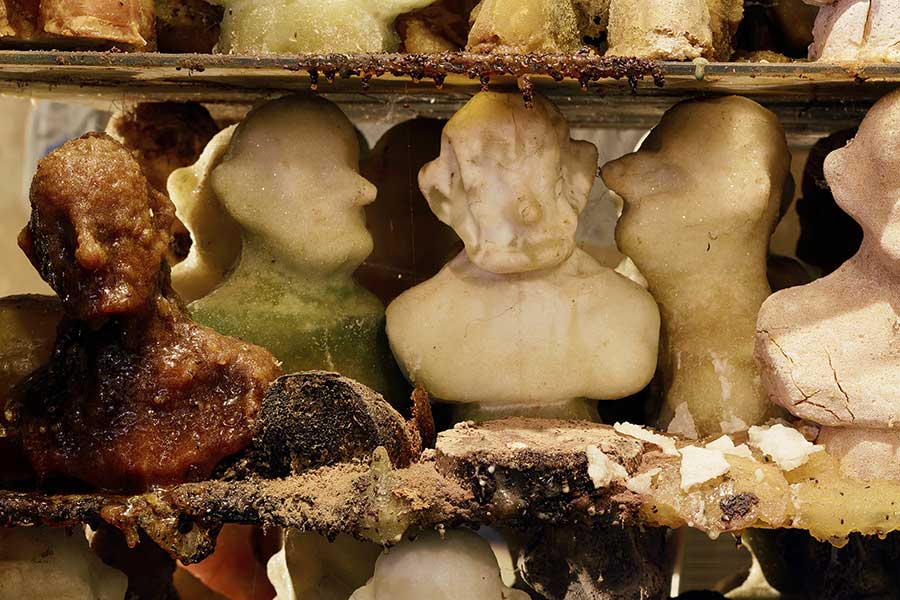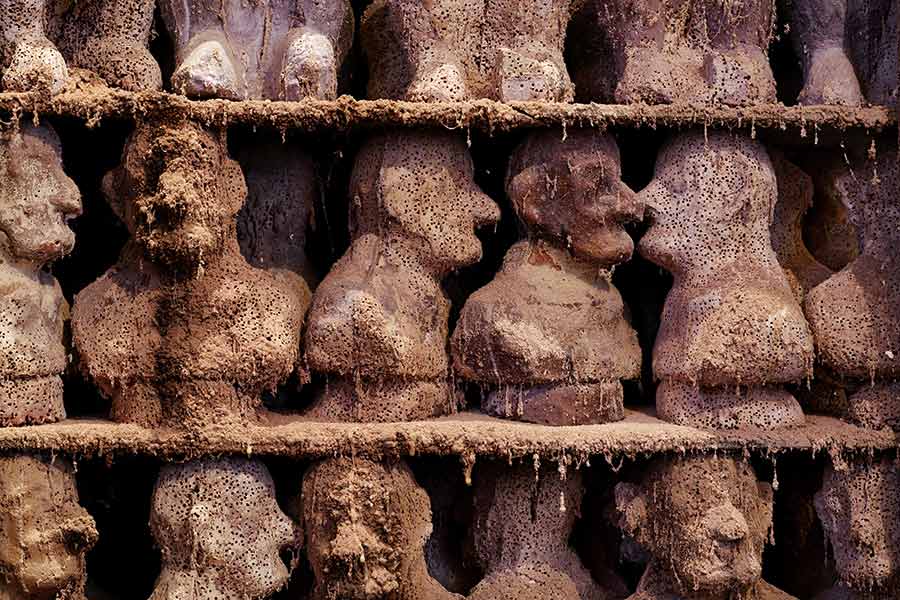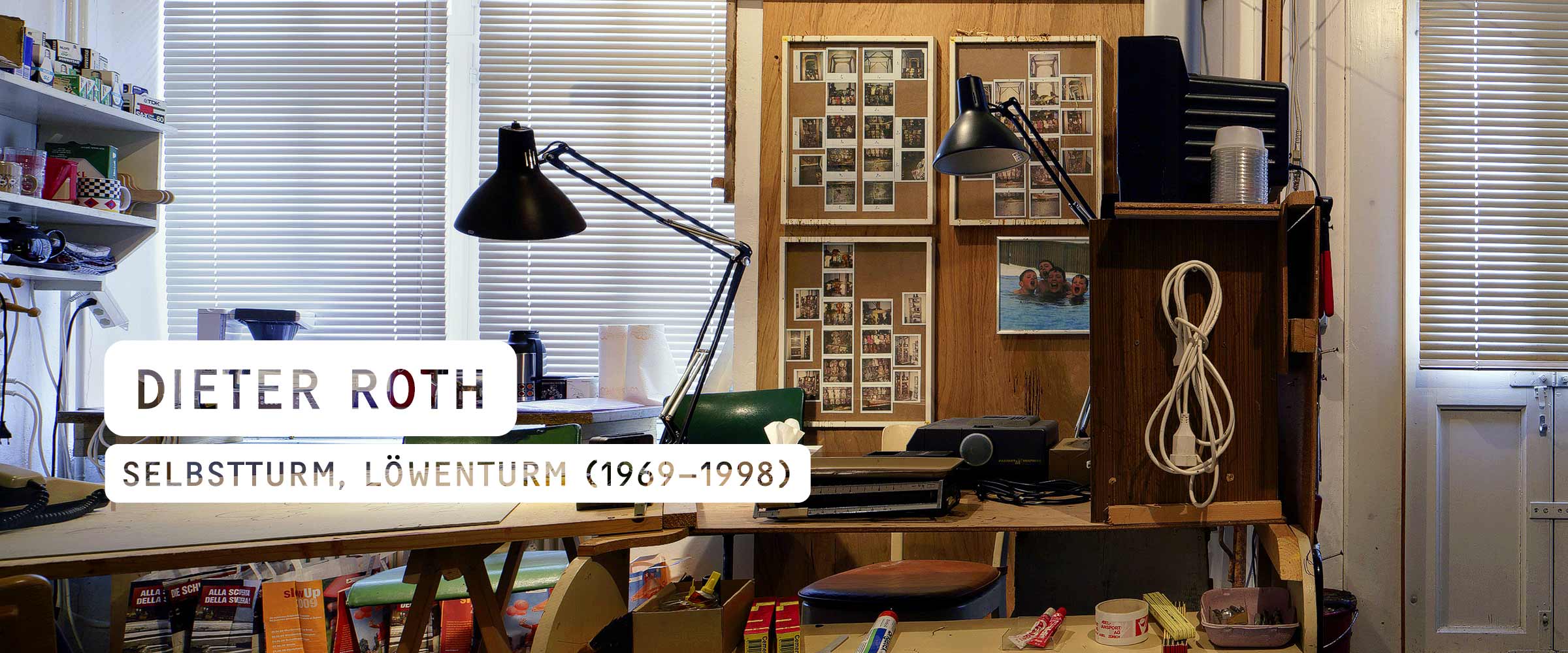The sculpture Selbstturm; Löwenturm [Self tower; Lion tower], by Dieter Roth (1930–1998), standing in the room adjacent to the Kunstmuseum Basel | Gegenwart, seems uncanny, yet familiar, like a mass of memories that have fallen out of time. A faintly sour smell of chocolate hangs in the air. Self-portraits and lions' heads, cast in chocolate and sugar, are densely arranged on rows of shelves, set in two free-standing racks. At the suggestion of Maja Oeri, the Emanuel Hoffmann Foundation acquired the work in 1989 as an artistic concept that was still a work in progress.
Dieter Roth, SelbstturmLöwenturm (1969–1998)
Selbstturm; Löwenturm offers a unique insight into Dieter Roth's oeuvre. The installation in his former studio, exposed to a process of continual decay, is one of the boldest, most unconventional works acquired by the Emanuel Hoffmann Foundation.
Self-Portraits and Lion Heads

Dieter Roth, Selbstturm, 1969–1998, wood, glass, chocolate casts, sugar casts; Löwenturm, 1970—1998, iron, glass, chocolate casts, sugar casts; studio consisting of various materials, objects and devices, Emanuel Hoffmann Foundation, on permanent loan to the Öffentliche Kunstsammlung Basel (location: St. Alban-Rheinweg, Basel), © Dieter Roth Estate.
Location
Room adjacent to the Kunstmuseum Basel | Gegenwart
Guided access only.


The sculptures, which over the years have grown fragile, have their starting point in Dieter Roth's first group of chocolate multiples, made in 1968 and titled Portrait of the Artist as Vogelfutterbüste [Portrait of the Artist as Birdseed Bust] – alluding to James Joyce's novel of artistic awakening, A Portrait of the Artist as a Young Man (1916), which Roth dismissed as kitsch. The small busts, standing just 20 centimetres tall, are made of chocolate mixed with birdseed. They were originally mounted on broom handles, with a platform provided for garden birds to perch and consume the sculptures. From 1969 onwards, Roth began to stack the casts into towers, starting with the Selbstturm and continuing from 1970 with the heads in the Löwenturm. The towers were first exhibited in 1971 at Daniel Spoerri's Eat Art Gallery in Düsseldorf. From 1985, Roth began to augment the self-portraits and lion busts with sphinx-like figures combining human and animal features, and started also to experiment with various types of sugar. The sugar casts were deposited on the earlier, chocolate layers of the tower. Dieter Roth described this structure as an image of nature, with the brown chocolate symbolising the earth, and the coloured and light blue sugar figures evoking, respectively, flowers and the sky. Since the works were first created, their organic materials have continued to change and evolve, in complicity with the artist – decaying and crumbling, emitting odours, and altering their shape and colour. This accords with Roth's conviction that art must be part of life, exposed to the rhythms of time and caught up in a process of perpetual transformation.
The two racks, taller than head height, stand in the centre of Dieter Roth’s former studio, which houses a small workshop with two cooking stoves, pots and various kitchen utensils, plaster and silicone moulds, bags of sugar and food colourings. There is also a neatly ordered desk with a telephone, a wall shelf with files documenting the work on the towers, a card index with photographs of the sculptures, a camera for still photographs and a video camera, a refrigerator, work clothes, tools, and souvenir photos of Dieter Roth, his grandchildren and his work colleagues.
- Dieter Roth, Selbstturm; Löwenturm(pdf, 477.94 KB)
Related topics

